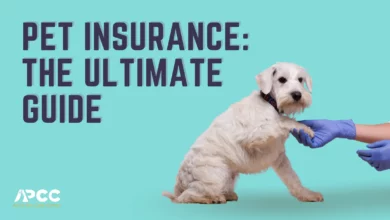Securing Your Furry Friend’s Health: A Comprehensive Guide to the Best Pet Health Insurance
Pets have become indispensable members of our families, providing us with unconditional love and companionship. Just like humans, our furry friends can also experience unexpected illnesses and injuries, and veterinary expenses can be a significant financial burden. To ensure your pet receives the best possible care without breaking the bank, pet health insurance has become an increasingly popular solution. In this article, we’ll delve into the world of pet health insurance and explore the best options available to keep your beloved companion healthy and happy.
Contents
- 1 1. Coverage Options: Tailor Your Plan to Your Pet’s Needs
- 2 2. Deductibles: How Much You Pay Out-of-Pocket
- 3 3. Coinsurance: Sharing the Veterinary Bill
- 4 4. Reimbursement vs. Direct Pay: How You Receive Payment
- 5 5. Exclusions and Limitations: What’s Not Covered
- 6 6. Premium Costs: Budget-Friendly Protection
- 7 7. Customer Service and Transparency
- 8 8. Financial Strength and Stability
- 9 9. Accessibility and Enrollment
- 10 10. Reputation and Reviews: Insights from Other Pet Owners
- 11 The Comprehensive Coverage: Understanding the Different Types of Pet Health Insurance
- 12 The Best Pet Health Insurance: Coverage and Benefits
- 13 Thanks for Reading!
1. Coverage Options: Tailor Your Plan to Your Pet’s Needs
Pet health insurance policies vary greatly in terms of coverage options. Some plans cover only accidents and illnesses, while others include wellness care, such as vaccinations, spaying/neutering, and dental care. Consider your pet’s age, breed, and health history when choosing a plan that provides the coverage you need.
2. Deductibles: How Much You Pay Out-of-Pocket
The deductible is the amount you pay towards eligible veterinary expenses before your insurance coverage kicks in. Higher deductibles typically result in lower premiums, while lower deductibles mean higher monthly costs. Choose a deductible that aligns with your budget and risk tolerance.
3. Coinsurance: Sharing the Veterinary Bill
Coinsurance is the percentage of eligible veterinary expenses that you pay after meeting your deductible. For example, with a 20% coinsurance, you would pay 20% of the remaining bill after the deductible is met. Lower coinsurance means a higher premium, but it can save you money on large veterinary bills.
4. Reimbursement vs. Direct Pay: How You Receive Payment
Pet health insurance companies either reimburse you for veterinary expenses or pay the veterinarian directly. Reimbursement policies require you to submit claims and wait for payment, while direct pay policies streamline the process by handling the payments directly with the veterinarian.
5. Exclusions and Limitations: What’s Not Covered
Most pet health insurance policies have exclusions and limitations that define what is and is not covered. Common exclusions include pre-existing conditions, cosmetic procedures, and elective surgeries. Read the policy carefully to understand the coverage limitations.
6. Premium Costs: Budget-Friendly Protection
Pet health insurance premiums vary depending on factors such as your pet’s age, breed, location, and the coverage you choose. Get quotes from multiple insurers to compare costs and find a plan that fits within your budget.
7. Customer Service and Transparency
Exceptional customer service is crucial when dealing with pet health insurance. Look for insurers with responsive and knowledgeable staff who can assist you with claims and answer your questions promptly. Transparent policies with clear communication and easy access to information are also vital.
8. Financial Strength and Stability
The financial strength of your pet health insurance provider is important. Consider insurers with a solid track record of paying claims and a strong financial foundation. This ensures that your coverage will be available when you need it.
9. Accessibility and Enrollment
Enrollment in pet health insurance is typically straightforward, but it’s crucial to know the eligibility requirements. Some insurers have age restrictions or breed limitations. Ensure that your pet meets the eligibility criteria and that you can enroll them easily.
10. Reputation and Reviews: Insights from Other Pet Owners
Check online reviews and testimonials from other pet owners to gain insights into the reputation and quality of service provided by different pet health insurance companies. Positive experiences and high ratings are indicators of a reliable and trustworthy insurer.
The Comprehensive Coverage: Understanding the Different Types of Pet Health Insurance
When selecting the best pet health insurance plan for your furry companion, it’s crucial to understand the various types of coverage available. Here’s a detailed breakdown:
1. Accident-Only Plans
These plans cover injuries or accidents that require veterinary care, such as broken bones, lacerations, or poisoning. They are typically the most affordable option but provide limited coverage.
2. Basic Plans
Basic plans cover accidents and illnesses, including diagnostic tests, medications, and hospitalization. While more comprehensive than accident-only plans, they may not cover pre-existing conditions or specialty care.
3. Comprehensive Plans
Comprehensive plans offer the most extensive coverage, covering a wide range of accidents, illnesses, preventive care, and even alternative therapies like acupuncture. They are ideal for pets with ongoing health concerns or those requiring specialized treatment.
4. Wellness Plans
Wellness plans focus on preventive care and routine check-ups. They may cover vaccinations, deworming, and spaying or neutering, helping you budget for your pet’s ongoing health and well-being.
5. Breed-Specific Plans
Certain breeds are prone to specific health conditions. Breed-specific plans are designed to cover the unique risks associated with particular breeds, providing tailored coverage for your pet’s specific needs.
6. Multiple Pet Plans
If you have multiple pets, multiple pet plans offer discounted coverage for each animal under a single policy. This can save you money while ensuring all your furry family members are protected.
7. Lifetime Coverage Plans
Lifetime coverage plans provide peace of mind by covering your pet’s health from the time they enroll until their lifespan ends. This eliminates concerns about renewing policies or coverage limitations as your pet ages.
8. Reimbursement Plans
Reimbursement plans allow you to pay for veterinary expenses upfront and then submit a claim to the insurance company for reimbursement. This provides flexibility but requires you to have sufficient funds to cover unexpected medical costs while waiting for reimbursement.
9. Indemnity Plans
Indemnity plans pay a set amount for specific expenses, such as a certain percentage of veterinary bills. This can provide predictability in terms of coverage, but limitations may apply.
10. PPO Plans
Preferred Provider Organization (PPO) plans allow you to access a network of participating veterinarians who offer discounted rates. This can save you money on veterinary care while still providing comprehensive coverage.
The Best Pet Health Insurance: Coverage and Benefits
Routine Care
Pet health insurance can cover routine vet visits, including wellness exams, vaccinations, and dental cleanings. These services are essential for preventive care and can help keep your pet healthy and happy. However, routine care coverage can vary depending on the plan you choose. Some plans may have a lower annual limit, while others may cover a wider range of services.
Accident and Illness Coverage
This is the core coverage of most pet health insurance policies. It covers expenses related to accidents and illnesses, such as surgery, hospitalization, and diagnostic tests. The amount of coverage you receive will depend on the plan you choose. Some plans have low deductibles and high annual limits, while others have higher deductibles and lower annual limits.
Prescription Medications
Pet health insurance can also cover prescription medications, both short-term and long-term. This is an important benefit, especially for pets with chronic conditions that require ongoing medication. However, some plans may limit prescription coverage to certain types of medications.
Alternative Therapies
Some pet health insurance plans offer coverage for alternative therapies, such as acupuncture, chiropractic care, and massage therapy. Alternative therapies can be beneficial for pets with certain health conditions, but they are not always covered by traditional pet insurance policies.
Emergency Care
Pet health insurance can cover the cost of emergency veterinary care, which can be expensive. Emergency care includes services such as surgery, hospitalization, and diagnostic tests. Some plans may have a separate deductible for emergency care, while others may include it in the overall annual deductible.
| Feature | Coverage |
|---|---|
| Routine Care | Wellness exams, vaccinations, dental cleanings |
| Accident and Illness | Surgery, hospitalization, diagnostic tests |
| Prescription Medications | Both short-term and long-term medications |
| Alternative Therapies | Acupuncture, chiropractic care, massage therapy |
| Emergency Care | Surgery, hospitalization, diagnostic tests |
Thanks for Reading!
That sums up our comprehensive guide to pet health insurance. Finding the best plan for your beloved companion can be a daunting task, but we hope this article has provided you with valuable insights and guidance. Remember, your pet’s health is paramount, so investing in quality insurance ensures their well-being and peace of mind for you and your family.
Thank you again for taking the time to read this article. We highly encourage you to visit our website again in the future for more informative articles and updates on pet care. Our commitment remains to provide you with reliable and helpful information to enhance your pet’s life.








